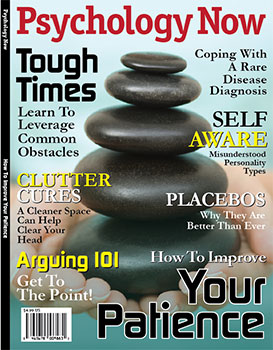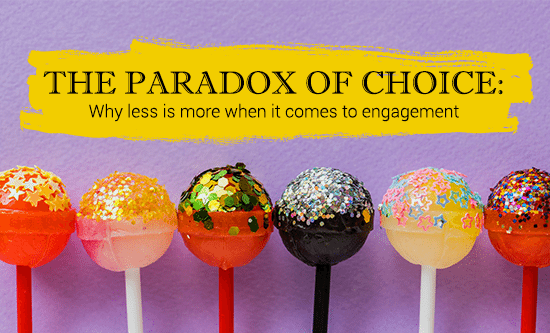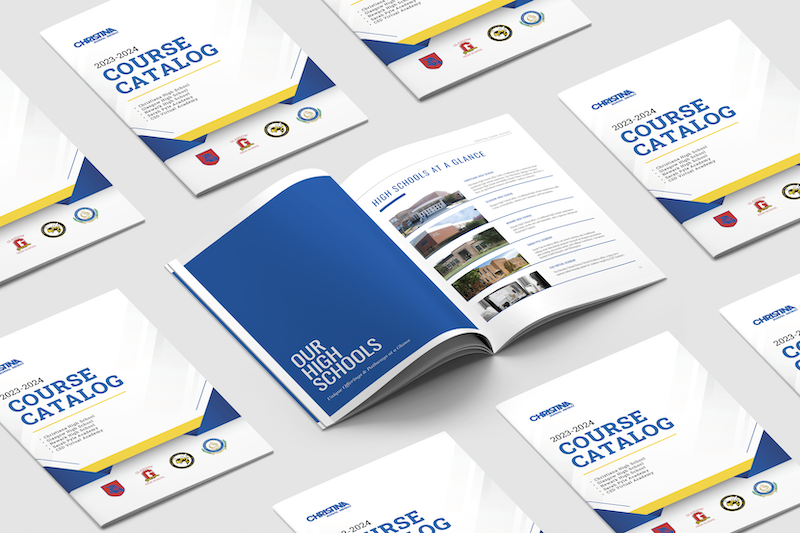Table of Contents
Catalog shopping has been a staple of retail for generations, offering consumers a tactile and engaging way to browse products from the comfort of their homes. However, beneath the glossy pages and colorful layouts lies a fascinating realm of consumer psychology. In this article, we will embark on a journey through the psychology of catalog shopping, unraveling the intricacies of consumer behavior that make this form of retail so enduringly popular.
Catalog shopping, a time-honored tradition in retail, has always been more than just a means of purchasing products; it’s a fascinating exploration of the human psyche. Beyond the captivating glossy pages and meticulously designed layouts, the psychology of catalog shopping reveals a world of intricate consumer behaviors that have sustained its popularity for generations. Join us on this enlightening journey as we delve deeper into the captivating psychology of catalog shopping.
1. The Power of Visual Appeal: Catalogs are a visual feast, carefully curated with captivating imagery and aesthetically pleasing layouts. This visual allure taps into the fundamental human preference for visually stimulating content. Studies have shown that compelling visuals can evoke emotions, stir desire and create a sense of connection with products, ultimately influencing purchase decisions.
2. The Art of Product Presentation: How products are presented within a catalog is a science in itself. The arrangement, organization and placement of items can significantly impact consumer choices. For example, strategically positioning high-margin or best-selling items on prominent pages can influence customers to make additional purchases.
3. The Influence of Storytelling: Catalogs often tell a story, whether it’s through lifestyle imagery, product narratives or themed sections. Storytelling engages consumers on an emotional level, allowing them to envision how products fit into their lives. By creating a narrative around the products, catalogs evoke a sense of aspiration and desire.
4. The Element of Curiosity: Catalogs spark curiosity and the thrill of discovery. As readers flip through the pages, they anticipate what they’ll find next. This element of curiosity is a psychological hook that keeps consumers engaged and encourages them to explore further.
5. The Joy of Ownership: Circling items with a pen or making notes in the margin is a tangible act of ownership, even before a purchase is made. This sense of ownership fosters a personal connection with the catalog and the products within it. It transforms the catalog from a mere browsing tool into a personalized wish list.
6. The Role of Seasonality and Scarcity: Seasonal catalogs and limited-time offers leverage the psychology of scarcity. When customers believe that a product is only available for a limited period or during a specific season, they are more motivated to take action and make a purchase, fearing they might miss out.
7. The Comfort of Familiarity: Catalogs can become a familiar and comforting presence in people’s homes. Their arrival can signal the changing of seasons or holidays, creating a sense of tradition and anticipation. This familiarity builds a unique bond between consumers and the brand.
8. The Transition to Online Shopping: While the psychology of catalog shopping remains relevant, it has evolved with the digital age. Online shopping, which often replicates the visual appeal and storytelling elements of catalogs, harnesses technology to further personalize the experience. Algorithms analyze browsing history and preferences to recommend products, making the online catalog a powerful tool for modern retailers.
In conclusion, catalog shopping transcends mere commerce; it’s a captivating journey through the intricacies of human psychology. Understanding the visual appeal, storytelling and emotional connections that catalogs create is key to their enduring popularity. While the medium may have evolved in the digital age, the fundamental principles of catalog psychology continue to shape how consumers browse, choose and connect with products in the modern retail landscape.
For a comprehensive look at this subject, we invite you to read more on this dedicated page: Course Catalog | Edmentum
Visual Stimulation
Human beings are highly visual creatures and catalogs leverage this preference for visual content. The artful presentation of products, enhanced by high-quality imagery and creative layouts, engages consumers on a sensory level. Captivating visuals stimulate curiosity and prompt further exploration.
As highly visual creatures, humans have an innate inclination to engage with the world through their senses and catalogs have masterfully harnessed this aspect of human psychology. They do so by skillfully orchestrating the artful presentation of products, employing high-quality imagery and crafting creative layouts that appeal to our visual senses. This immersive visual experience serves as a powerful catalyst, engaging consumers on a profound sensory level and leading them on a journey of curiosity and exploration.
Immersive Experiences: Catalogs are more than just product listings; they are immersive experiences waiting to be discovered. The use of vivid, high-quality imagery allows consumers to envision products in intricate detail. They can imagine how a cozy sweater might feel against their skin or picture themselves using a versatile kitchen gadget. This level of immersion taps into the power of imagination, creating a connection between the consumer and the product that goes beyond words or descriptions.
Curiosity Spark: Captivating visuals spark curiosity. When consumers open a catalog and are met with striking images and skillfully arranged products, they are enticed to explore further. Their natural instinct to satisfy their curiosity leads them to turn pages, click links or scroll through digital catalogs, eager to uncover more about the items that have piqued their interest.
Visual Storytelling: Catalogs excel at visual storytelling. Through carefully composed images and creative layouts, they convey more than just product features; they tell a narrative. A catalog can transport consumers into a beachside vacation, a cozy winter retreat or a bustling kitchen full of culinary delights. Visual storytelling engages emotions, making consumers feel connected to the lifestyle and experiences associated with the products.
Aesthetic Appeal: Beyond functionality, catalogs prioritize aesthetic appeal. The layout, typography and overall design are crafted with care. These aesthetic choices communicate a sense of quality and professionalism, which resonates with consumers on a subconscious level. A visually appealing catalog can create a positive impression of the brand and its products.
Visual Memory: Visual content is more likely to be retained in memory compared to text alone. When consumers peruse a catalog filled with captivating visuals, they are more likely to remember the products they encountered. This memory retention can influence their purchasing decisions, as they recall the items that left a lasting impression.
Emotion and Connection: Visuals have the power to evoke emotions. Whether it’s the warm glow of a sunset over a vacation destination or the joyous smiles of a family gathered around a dining table, catalogs tap into these emotional triggers. When consumers connect emotionally with the images they see, they are more likely to form a bond with the products and the brand.
In essence, catalogs are masters of visual seduction. They understand the profound impact visuals have on human psychology and use this knowledge to create an experience that engages, excites and inspires. Through the artful presentation of products and the use of captivating imagery, catalogs not only stimulate curiosity but also foster a sense of connection and desire, making them a compelling and enduring marketing tool in our visually-driven world.
To expand your knowledge on this subject, make sure to read on at this location: Emotional Responses to Multisensory Environmental Stimuli: A …

Emotional Connection
Catalogs wield a unique power to evoke emotions through visuals. The choice of colors, imagery and design elements can convey different emotional tones. Warm, inviting visuals can create a sense of comfort and nostalgia, while sleek, modern aesthetics may evoke feelings of sophistication and innovation.
Catalogs harness a distinctive ability to tap into our emotions through the captivating world of visuals. The careful selection of colors, imagery and design elements within these pages has the incredible potential to conjure a wide spectrum of emotional responses.
In the realm of catalogs, the palette of colors becomes a powerful emotional tool. Soft, muted hues like pastels and earthy tones can transport readers to a tranquil and serene state of mind. These colors often resonate with feelings of calm, tranquility and peace. Conversely, bold and vibrant colors such as fiery reds or electric blues can awaken a sense of excitement and passion, igniting a spark of enthusiasm that lingers long after the catalog has been closed.
Imagery, too, plays a vital role in the emotional tapestry woven by catalogs. Photographs of idyllic landscapes or cozy interiors can transport readers to distant places or evoke a sense of warmth and nostalgia. Images of people experiencing joy, laughter or adventure can elicit corresponding emotions, making the audience feel connected to the depicted moments, almost as if they were part of the story.
The design elements in catalogs offer yet another layer of emotional communication. For instance, a catalog with a rustic, handcrafted feel can invoke a sense of authenticity and genuineness, eliciting emotions of trust and reliability. On the other hand, a sleek and minimalist design may convey a message of cutting-edge innovation and sophistication, appealing to the desire for progress and modernity.
Together, these visual components orchestrate a symphony of emotions within the reader. A catalog that employs warm, inviting visuals might transport you to cherished memories of home and family, while simultaneously enticing you with the promise of comfort and familiarity. In contrast, one designed with sleek, modern aesthetics can transport you to the world of innovation and possibilities, igniting aspirations for a future marked by progress and sophistication.
In this way, catalogs are not just collections of products or services; they are conduits of emotion, inviting us to connect with the worlds they depict, the stories they tell and the emotions they evoke. Whether it’s the comfort of nostalgia or the allure of innovation, catalogs have a unique power to touch our hearts and minds through the visual language they speak.
Looking for more insights? You’ll find them right here in our extended coverage: The Psychology of Consumption: Decoding What Drives Our …

The Paradox of Choice
Although catalogs offer a wide array of products, too many choices can overwhelm consumers. This phenomenon, known as the paradox of choice, can lead to decision fatigue. To counter this, catalogs employ strategies like categorization, product recommendations and featured items to guide consumers and make decision-making more manageable.
The paradox of choice is a fascinating aspect of consumer psychology that sheds light on how offering too many options can actually hinder decision-making rather than facilitate it. In the context of catalogs, where a plethora of products are showcased, this phenomenon becomes particularly relevant. To address the challenges posed by choice overload and decision fatigue, catalogs implement a variety of effective strategies that benefit both consumers and businesses:
Categorization and Organization: One of the primary strategies employed by catalogs is categorization. Products are grouped into logical categories or sections, making it easier for consumers to navigate and find what they need. Whether it’s dividing products by type, occasion or price range, categorization streamlines the browsing process, reducing the cognitive load on customers.
Featured and Highlighted Items: Catalogs often highlight a select few items or categories as “featured” or “editor’s picks.” These curated selections draw attention to specific products that the catalog believes are particularly noteworthy or popular. By doing so, catalogs guide customers toward products that are likely to align with their interests or needs.
Product Recommendations: Leveraging data-driven algorithms, many catalogs provide personalized product recommendations. These suggestions are based on the customer’s browsing and purchase history, as well as the behavior of similar shoppers. Such recommendations help customers discover products they might have otherwise missed and simplify the decision-making process.
Limited-Time Offers: Highlighting limited-time offers or sales events can create a sense of urgency and encourage customers to make decisions more swiftly. These time-limited promotions can help customers focus on specific products and reduce the fear of missing out.
Clear Product Information: Providing clear and concise product information is essential. Catalogs typically offer detailed descriptions, specifications and high-quality images to help customers make informed choices. Transparent information instills confidence in the purchase decision.
Customer Reviews and Ratings: Including customer reviews and ratings alongside product listings can assist shoppers in gauging the quality and suitability of a product. Social proof from other customers can be a valuable source of information, helping customers make confident choices.
Return Policies and Guarantees: Assuring customers of flexible return policies and quality guarantees can alleviate the fear of making a wrong choice. When consumers know they have options for returns or exchanges, they may feel more comfortable exploring different product options.
Search and Filter Options: Robust search and filtering tools empower customers to quickly narrow down their choices based on specific criteria. Whether it’s filtering by size, color, price or brand, these tools enable customers to refine their selections efficiently.
Simplified Checkout Process: An overly complex checkout process can be a source of decision fatigue. Catalogs often streamline the checkout process, making it straightforward and hassle-free to complete a purchase.
Educational Content: Some catalogs incorporate educational content alongside product listings. This content may include guides, tutorials or usage tips that help customers understand the products better. Educated customers are more confident in their choices.
In conclusion, while catalogs offer a diverse array of products, they recognize the need to mitigate the paradox of choice. By employing these strategies, catalogs transform a potentially overwhelming shopping experience into one that is more manageable and enjoyable for consumers. Simultaneously, businesses benefit from increased customer satisfaction, higher conversion rates and a streamlined path to purchase. In the dynamic world of retail, these strategies play a crucial role in guiding consumers toward informed decisions and enhancing their overall shopping journey.
If you’d like to dive deeper into this subject, there’s more to discover on this page: Consumer Behaviour through the Eyes of Neurophysiological …

Anchoring and Pricing
The order in which products are presented can influence consumers’ perception of price. Catalogs strategically place high-margin or anchor products at the beginning, affecting how consumers gauge the value of other items. This anchoring effect can lead to higher perceived value and increased spending.
The arrangement of products within a catalog isn’t just a matter of convenience; it’s a powerful tool in shaping consumer behavior and perceptions, especially when it comes to pricing and value assessment. Understanding the psychology behind the order in which products are presented sheds light on how catalogs strategically influence consumers. One critical psychological phenomenon at play here is the anchoring effect. Let’s delve deeper into this concept and how it influences consumer behavior:
1. The Anchoring Effect Explained:
The anchoring effect is a cognitive bias wherein individuals rely heavily on the first piece of information they encounter when making decisions. In the context of catalog shopping, this means that the initial product a customer sees can serve as an “anchor” that influences their perception of the prices of subsequent items.
2. High-Margin or Anchor Products:
Catalogs are well aware of the anchoring effect and often strategically place high-margin or anchor products at the beginning of their listings. These anchor products are chosen because they offer a higher profit margin for the retailer, but they also play a pivotal role in shaping the consumer’s perception of value.
3. Influence on Perceived Value:
When consumers encounter an anchor product with a relatively high price or perceived value at the start of their shopping journey, it sets a mental reference point. Subsequently, as they browse through the catalog, they instinctively compare the prices of other items to this initial anchor. This comparison often leads to the perception that other products are priced more reasonably or are of better value in relation to the anchor.
4. Encouraging Spending:
The anchoring effect can be a powerful driver of increased spending. Consumers may be more inclined to make purchases they might have otherwise hesitated on, as they perceive these items as better deals compared to the initial anchor product. This psychological bias can result in a higher average transaction value for the retailer.
5. Careful Selection of Anchor Products:
Retailers must carefully select anchor products that align with their overall marketing and sales strategies. These products should be strategically chosen to maximize the anchoring effect while still appealing to the target audience.
6. Subsequent Product Arrangement:
Following the anchor product, catalogs often arrange products strategically. Some may place higher-margin items immediately after the anchor, while others may intersperse lower-cost items to maintain a perception of variety and affordability.
7. Anchoring in Online Shopping:
The anchoring effect is not limited to print catalogs; it’s prevalent in online shopping experiences as well. E-commerce websites often display featured or “best-selling” products prominently on their landing pages, serving as digital anchors to influence consumer choices.
8. Ethical Considerations:
While the anchoring effect can be a legitimate sales strategy, there are ethical considerations. It’s crucial for retailers to ensure that the anchor products are genuinely valuable and of high quality, rather than relying solely on manipulative pricing tactics.
In conclusion, the anchoring effect is a powerful psychological phenomenon that catalog designers and online retailers leverage to influence consumer perceptions and drive sales. By strategically placing anchor products at the forefront, retailers can shape how consumers gauge the value of other items, ultimately leading to increased spending and a more profitable shopping experience. However, ethical considerations should always guide the use of these strategies to ensure that consumers are making informed and fair purchasing decisions.
To delve further into this matter, we encourage you to check out the additional resources provided here: The Consumer Contextual Decision-Making Model – Frontiers

Personalization Magic
Catalogs have the power to make consumers feel seen and understood. Personalization techniques, such as including the customer’s name or showcasing products related to their past purchases or browsing history, create a sense of individualized attention and strengthen the bond between the consumer and the brand.
Indeed, catalogs possess a unique ability to forge a personal connection between consumers and brands, fostering a sense of recognition and understanding that goes beyond the transactional. The art of catalog personalization is a pivotal strategy that delves into the realm of consumer psychology and its impact extends far beyond the pages themselves. Here’s a deeper exploration of how personalization techniques in catalogs create a profound bond:
The Power of Personal Address: Addressing customers by their names within catalogs is a simple yet potent personalization technique. It signals to customers that they are valued individuals, not faceless entities. This personalized touch grabs attention, instills a sense of importance and encourages customers to engage more deeply with the catalog’s content.
Tailored Product Recommendations: Personalized catalogs don’t just showcase generic product listings; they curate recommendations based on the customer’s past purchases, browsing history and preferences. By featuring items that align with the individual’s interests, catalogs demonstrate an understanding of their unique needs, effectively streamlining the shopping process and enhancing the likelihood of sales.
Relevance and Engagement: When customers receive catalogs filled with products that genuinely pique their interest, they are more likely to spend time engaging with the content. The relevance of the offerings keeps them flipping through pages, increasing the chances of discovering new items and making purchases they may have otherwise overlooked.
Emotional Connection: Personalization evokes a powerful emotional response. Customers feel that the brand cares about their preferences and choices, strengthening their emotional connection to the brand. This emotional bond often leads to brand loyalty and repeat purchases.
Retargeting and Remarketing: For online shoppers, catalogs that reflect their recent online activity, such as abandoned shopping carts or product views, act as a reminder. This retargeting or remarketing technique gently nudges customers to revisit their decisions and complete their purchases.
Cross-Selling and Upselling: Personalization isn’t limited to showing products based solely on past behaviors. It also involves intelligently pairing complementary items. By suggesting products that go well together or offering upgrades or add-ons, catalogs can effectively cross-sell and upsell, boosting the average order value.
Seasonal and Occasion-Based Recommendations: Personalization extends to recognizing special occasions like birthdays, anniversaries or holidays. Catalogs that offer tailored gift ideas for these events help customers find the perfect presents, making their shopping experiences more convenient and thoughtful.
A Sense of Community: In some cases, personalization can extend to showcasing items that others in the customer’s geographic area or social network have recently purchased or shown interest in. This fosters a sense of community and belonging, encouraging customers to participate and make similar choices.
Continuous Learning and Improvement: Brands that invest in personalization technologies are constantly learning from customer interactions. They use data and insights to refine their personalization strategies, ensuring that catalogs become more accurate and attuned to customer preferences over time.
In summary, the personalization techniques employed in catalogs are not merely about improving sales; they are about creating meaningful and lasting connections. By making customers feel seen and understood, personalization enhances engagement, fosters brand loyalty and transforms shopping from a transaction into a personalized and emotionally resonant experience. In the evolving landscape of retail, personalization remains a cornerstone of building strong and enduring customer relationships.
To delve further into this matter, we encourage you to check out the additional resources provided here: Ikea’s New Catalog Magically Transforms Into Furniture

Storytelling and Brand Identity
Catalogs are not just product listings; they tell stories. By presenting products in a cohesive narrative with visually appealing layouts, catalogs create a brand identity that resonates with consumers. This storytelling can enhance the perceived value of products and make them more memorable.
Catalogs are not just product listings; they tell stories. By presenting products in a cohesive narrative with visually appealing layouts, catalogs create a brand identity that resonates with consumers. This storytelling can enhance the perceived value of products and make them more memorable.
Imagine flipping through the glossy pages of a high-end fashion catalog. Each page is meticulously designed to transport you into a world of elegance and style. The models are not just wearing clothes; they are embodying a lifestyle that you can aspire to. The choice of settings, from luxurious penthouses to exotic beaches, reinforces the idea that these products are more than just garments; they are keys to a sophisticated and glamorous existence. This storytelling through imagery and design allows you to connect with the brand on a deeper level, making you feel like you’re a part of their exclusive club.
Similarly, consider a catalog from a gourmet food company. As you peruse the pages filled with sumptuous dishes and artisanal ingredients, you’re not merely looking at food; you’re on a culinary adventure. The carefully curated recipes, paired with the finest ingredients, create a narrative of indulgence and culinary expertise. By the time you finish browsing, you’re not just thinking about what to eat; you’re inspired to recreate these experiences in your own kitchen. The catalog has not just presented products; it has ignited your passion for cooking and elevated your appreciation for gourmet ingredients.
In the digital age, catalogs have expanded beyond the confines of print. Online catalogs with interactive features offer an even more immersive experience. Imagine exploring a virtual catalog for a tech company. Instead of just listing products, it takes you on a journey through the evolution of technology. You start with the early innovations, see how they’ve shaped our lives and then discover the latest cutting-edge gadgets. The catalog is not just selling gadgets; it’s telling the story of human progress and innovation, making you appreciate the role these products play in our lives.
In essence, catalogs are not just about selling products; they are about creating emotional connections. They invite consumers to step into a world carefully crafted by the brand, where products are not just items for purchase but tools for self-expression, experiences to be had and stories to be told. These catalogs don’t just sit on coffee tables or in email inboxes; they become a part of our lives, leaving a lasting impression that goes far beyond the transaction. So, the next time you browse through a catalog, remember that you’re not just shopping; you’re embarking on a journey, one page at a time.
For a comprehensive look at this subject, we invite you to read more on this dedicated page: 15 Communication Exercises and Games for the Workplace

Scarcity and Urgency
Catalogs often employ scarcity and urgency tactics to encourage action. Limited-time offers, low-stock warnings and exclusive deals trigger cognitive biases that make consumers feel that they must act quickly to secure a desirable product.
Catalogs have mastered the psychology of consumer behavior by incorporating scarcity and urgency tactics into their marketing strategies. These tactics are not mere gimmicks; they tap into deep-rooted cognitive biases that influence how consumers make decisions. Here’s a closer look at how scarcity and urgency are wielded to compel action in catalog marketing:
Limited-Time Offers: The allure of limited-time offers lies in their ability to create a sense of urgency. When customers see a product with a countdown timer or a specific expiration date for a discount, their fear of missing out (FOMO) kicks in. This psychological trigger pushes them to make a purchase sooner rather than later, driven by the desire to secure a deal that may never come again.
Low-Stock Warnings: Catalogs often employ low-stock warnings to signal that a product is in high demand and may soon be unavailable. This taps into the scarcity bias, where people place higher value on items that are perceived as rare or in short supply. Customers feel compelled to act swiftly, fearing that they might miss out on owning a coveted item.
Exclusive Deals: Exclusive deals reserved for a select few customers tap into the principle of exclusivity. People inherently value things that are not readily available to everyone. When catalogs offer exclusive discounts or products to a specific group or through a unique channel, it triggers a sense of privilege and urgency among the targeted audience.
Social Proof: Scarcity and urgency tactics are further amplified by social proof. When customers see that a product is selling fast or that others are taking advantage of a limited-time offer, they experience a powerful psychological push to join the crowd. This herd mentality reinforces the perception that the opportunity is too good to pass up.
Fear of Regret: The fear of regret is a strong emotional motivator. Catalogs leverage this fear by making customers imagine the disappointment they might feel if they don’t seize the opportunity. By picturing a future without the desired product or exclusive deal, customers are more likely to act immediately to avoid potential regret.
Creating a Sense of Ownership: Scarcity and urgency tactics also play on the psychology of ownership. When customers believe that they have secured a scarce item or taken advantage of a time-sensitive offer, they experience a sense of ownership even before the purchase is completed. This emotional connection further solidifies their commitment to buy.
In summary, scarcity and urgency tactics employed by catalogs are rooted in deep-seated cognitive biases and behavioral psychology. These tactics create a sense of urgency and desirability that encourages customers to act quickly. While effective, it’s essential for businesses to use these tactics responsibly and transparently to build trust and maintain positive customer relationships. When used ethically, scarcity and urgency can be powerful tools for driving conversions and enhancing the overall shopping experience.
Don’t stop here; you can continue your exploration by following this link for more details: Psychology of Marketing-Decoding Consumer Behavior

Social Proof
Consumers rely on the opinions and actions of others when making decisions. Catalogs can incorporate social proof in the form of customer reviews, testimonials and images of satisfied customers enjoying products. This reassures potential buyers and influences their choices.
Consumers increasingly rely on the opinions and actions of others when making purchasing decisions, seeking reassurance and validation before committing to a product or service. Catalogs have recognized the power of social proof, harnessing it in various forms to instill confidence in potential buyers and shape their choices. Here’s a more comprehensive exploration of how social proof is integrated into catalogs to influence consumer behavior:
Customer Reviews: Including customer reviews in catalogs provides valuable insights and authentic feedback on products. Consumers trust the experiences and opinions of their peers and positive reviews can sway their decisions. Moreover, displaying both positive and, when appropriate, constructive reviews demonstrates transparency and authenticity, fostering trust.
Testimonials: Testimonials are a powerful form of social proof that showcase personal success stories and endorsements. When catalogs feature testimonials from satisfied customers who have benefited from a product or service, it humanizes the brand and highlights real-world applications. Readers can relate to these stories, making them more likely to consider the product favorably.
User-Generated Content: Catalogs can incorporate user-generated content, such as photos or videos of customers using products. This visual proof not only provides authenticity but also allows potential buyers to envision themselves using the product in their own lives. It creates a connection between the product and its real-world application.
Ratings and Badges: Including product ratings, awards or certifications in catalogs adds a layer of credibility and trustworthiness. A high rating or a recognized badge reinforces the product’s quality and reliability, influencing consumers’ perceptions and choices.
Statistics and Popularity Indicators: Catalogs can highlight statistics about the product’s popularity, such as “Best Seller” or “Customer Favorite.” These indicators not only draw attention to the product but also create a sense of consensus among buyers, reinforcing the idea that many others have made a similar choice.
Influencer Endorsements: Collaborating with influencers or experts in the field to endorse products featured in catalogs can significantly impact consumer behavior. Influencers often have dedicated followings who trust their recommendations, making their endorsements a form of powerful social proof.
Before-and-After Imagery: For products with transformational effects, catalogs can incorporate before-and-after imagery to illustrate the product’s efficacy. Seeing tangible results in visual form can be a compelling motivator for potential buyers.
Usage Ideas: Sharing creative ways to use products can inspire potential buyers and demonstrate their versatility. Catalogs can showcase customer-generated usage ideas, providing inspiration and encouraging purchases.
Consistency with Brand Messaging: Effective social proof aligns with the overall brand message and catalog theme. Consistency in testimonials, images and reviews reinforces the brand’s identity and trustworthiness.
A/B Testing: Catalogs can use A/B testing to determine which forms of social proof resonate most with their audience. This data-driven approach allows for continuous improvement and optimization of social proof strategies.
In summary, social proof is a cornerstone of catalog marketing, leveraging the influence of real customers and endorsements to sway consumer decisions. When thoughtfully integrated into catalogs, it not only reassures potential buyers but also humanizes the brand, builds trust and creates a more engaging and persuasive shopping experience. By tapping into the innate desire for validation and community consensus, catalogs can effectively shape consumer choices and drive conversions.
Looking for more insights? You’ll find them right here in our extended coverage: Consumer Behaviour – 15 Neuromarketing Books You Must Read In …

The psychology of catalog shopping reveals that it’s not just about presenting products; it’s about understanding the human mind and emotions that drive consumer behavior. By harnessing the power of visual appeal, choice architecture, personalization and cognitive biases, catalog marketers create captivating shopping experiences that resonate with consumers on a deep psychological level.
In the ever-evolving landscape of retail, catalogs continue to prove their value as a versatile tool for delivering personalized and engaging shopping experiences. The next time you flip through a catalog, remember that behind each page lies a carefully crafted psychology designed to captivate and convert, making catalog shopping a truly remarkable blend of art and science.
Explore this link for a more extensive examination of the topic: Understanding Customer Experience Throughout the Customer …
More links
To expand your knowledge on this subject, make sure to read on at this location: Unlocking the Science of Shopping: Decoding Consumer …
